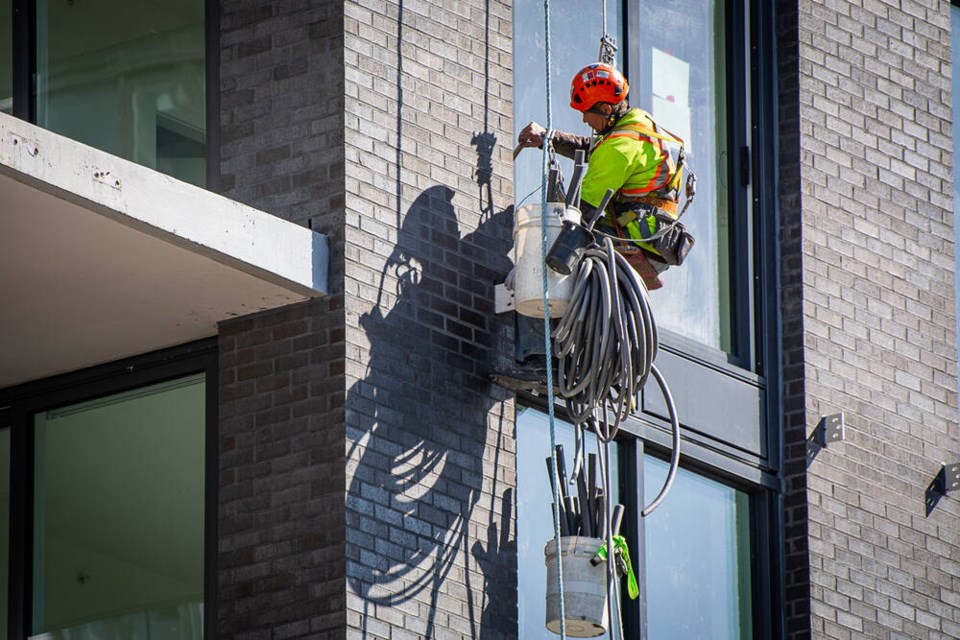The District of North Vancouver must deliver 5,185 additional units over the next two years, according to the municipality’s interim housing needs report.
At a meeting Oct. 21, council voted to receive the provincially mandated report, which was prepared by district staff.
As per legislation, the district created its first housing needs report in December 2021, which summarized key information about population and housing stock, while estimating future housing needs if long-term historical trends continue.
The initial report calculated that there would be 7,050 additional households in the district by 2031, that council had approved around 2,500 units not yet occupied, and 4,550 more would be required by 2031.
In this year’s interim report, staff projected a housing need of 22,369 units by 2041. In the four years since the first report, the district had successfully delivered 2,240 new units, leaving 5,185 to be built by the end of 2026.
These standardized estimates will be written into official community plans and zoning bylaws for 2025. The next comprehensive housing needs report is due by the end of 2028.
Presenting to council, DNV general manager of planning Dan Milburn called the report a needs assessment. In other words, it's how the province defines what communities need in terms of housing.
“What it is not is a supply and capacity assessment,” he said. “It doesn’t look at the various limitations within a community, such as infrastructure, service use, environmental physical limitations, such as hazardous areas, ownership and tenure limitations.”
The report doesn’t factor in other regulatory bodies like the federal government, nor factors like labour, supply chain and interest rates.
“All those things are potentially constraints on supplying capacity,” he said.
The 5,185 units defined in the report are the district’s minimum capacity to accommodate rezoning by the end of next year, Milburn added,
Looking at census data over 20 years (2001 to 2021), the district has grown at a rate of around 16 per cent, to 34,179 private dwellings by the end of the period.
A much faster rate is expected over the next two decades. By 2041, the district is expected to host 56,548 units, growing at a rate of 65 per cent, according to the report.
For comparison, the growth rate is expected to be 73 per cent in the City of North Vancouver and 57 per cent in West Vancouver over the next 20 years.
In terms of development type, DNV will have to accommodate roughly 20 large high-rises, 127 low-rises and 2,000 infill projects to keep up with projected need.
Province must provide infrastructure dollars to keep pace with new housing, mayor says
Reflecting on the provincial government’s decision to mandate municipal housing targets, Mayor Mike Little said that relationship must improve.
“There was no consultation with the District of North Vancouver leading up to their implementation, and that needs to change,” he said. “I take [Premier David Eby] at his word, saying that he recognized the community is not happy with the direction the province has been going … and they plan to work closer with other partners to improve those relationships.”
The province can’t achieve its goals without making sure local government has the appropriate infrastructure dollars to build transit and other infrastructure, Little said.
Coun. Herman Mah clarified with staff that a successfully delivered unit means that an occupancy permit has been issued for a new development.
Based on the number of units built over the past several years, Mah expressed concerns that the district might not meet the outlined targets.
But Milburn clarified that the 7,400 units between 2021 and 2026 isn’t a target. It’s capacity that must be accommodated in the district’s zoning
“Council has to consider creating zoning that will accommodate actually 22,400 units for the community by the end of next year,” he said. “The rate of growth then will be market based. It will be how quickly owners and applicants can submit their applications, satisfy all the requirements … and then build their projects.”
Especially considering that larger projects take a lot of time to build, the district likely won’t achieve the projected need over the next two years, Milburn added.
Apart from working with senior government, Mah said the municipality also has to collaborate with developers.
“Unless we set up our own development company, it’s not us that develops these buildings,” he said.
Noting projected population growth of 44 per cent in B.C. by 2046, Coun. Catherine Pope said housing should be built as quickly as possible.
“That is why the province mandated more housing be built,” she said. “Because the problem was municipalities like the district had rejected a lot of development in the past.”
“We’re way behind, and we are still painfully slow at responding to demand,” Pope said.




